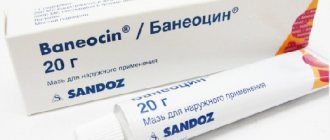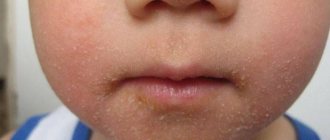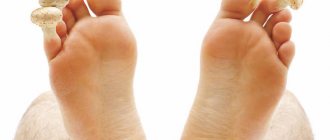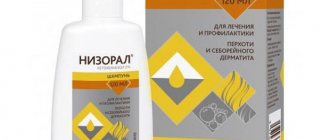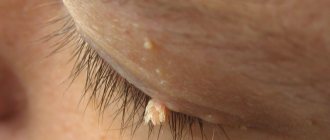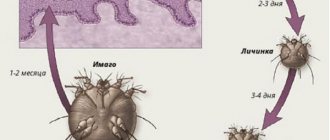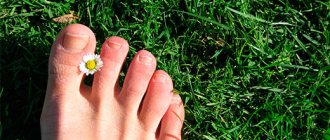Furunculosis is an infectious disease, the main symptom of which is purulent-necrotic inflammation of the hair follicle. It develops as a result of penetration of the pathogen into the skin - epidermal or Staphylococcus aureus. The bacterium is common in the environment and constantly lives on humans, but attacks only when favorable conditions arise. Treatment is carried out in different ways, the leading place among which is taken by medicines for boils in the form of injections, ointments and tablets.
Causes of furunculosis
Furunculosis is an inflammatory process that manifests itself acutely, with the formation of purulent necrosis in the hair follicle, sebaceous gland and the surrounding connective tissue. The development of a boil is provoked by pyogenic bacteria, in particular Staphylococcus aureus. This bacterium is recognized as a contributing factor, the carriage of which can be localized:
- on the nasal mucosa,
- armpits,
- in the perineal area,
- in the intestines.
The causes of furunculosis, among other things, are:
- contamination of skin microtraumas obtained, for example, due to careless shaving,
- increased sweating or sebum secretion, which may also have a hormonal nature,
- metabolic disorders: diabetes mellitus,
- obesity,
Due to an unfavorable combination of circumstances of the nature described above, acute purulent-necrotic damage to the follicle, sebaceous gland and surrounding subcutaneous tissue occurs, inflammation of which develops as a complication of folliculosis.
Initially, a limited inflammatory painful infiltrate appears - a hyperemic node of various sizes, in the center of which a conical pustule is formed, where the purulent substrate accumulates. Subsequently what happens:
- increased erythema,
- edema formation,
- purulent melting of the infiltrate,
- destruction of the pustule,
- exposure of the necrotic core,
- ulcer formation,
- filling the ulcer with granulations,
- ulcer healing and scar formation.
During the process of boil maturation, the remnants of the infiltrate are absorbed, which can be accompanied by painful regional lymphadenitis, as well as fever.
Features of boils of various localizations:
- boils on the front surfaces of the legs, scalp, fingers, and in the ear canal are very painful;
- boils on the upper lip, in the area of the nasolabial fold acquire a malignant course, there is: significant and dense swelling,
- the infiltrate spreads in the direction of the nasolabial fold, the inner corner of the eye,
- characterized by a dark purple color,
- severe fever
- headache,
- drowsiness,
There are localized and disseminated furunculosis:
- localized - these are multiple boils in limited areas of the body;
- disseminated is a group of boils on different parts of the body.
There are also acute and chronic recurrent furunculosis.
The development of furunculosis is promoted by sensitization to staphylococci, a decrease in the body's immunological reactivity, diabetes mellitus, the presence of chronic foci of infection and itchy dermatoses.
A conglomerate of boils on a joint infiltrate, which tends to increase due to peripheral growth, is called a carbuncle. During its development, new follicles are drawn into the process and the process spreads deeper.
After 4-5 days, an acutely inflammatory dense node with a diameter of up to 5-10 cm, dark red in color, and very painful on palpation is formed.
Subsequently, deep skin necrosis occurs around individual follicles in several places. The lesion becomes dark, even black, in color; holes appear in several places, from which purulent-bloody fluid is released. The consequence of this pathological process is the formation of ulcers with uneven edges and green-yellow necrotic, weakly detachable rods inside. Ulcers can merge, forming deep perforations:
- irregular shape
- with bluish, flabby, undermined edges,
- with an uneven bottom
- with a purulent coating.
The resulting defects in the skin and subcutaneous tissue bleed, and an infiltrate remains around for a long time. The ulcers heal within 2-3 weeks or more.
In severe cases, the development of carbuncle, as well as furunculosis in general, is accompanied by:
- chills,
- fever,
- dense swelling,
- lymphangitis,
- lymphadenitis,
- delusional
- meningeal symptoms.
Against the background of the use of corticosteroids and cytostatics, which sometimes occurs in the treatment of furunculosis, boils and carbuncles can be accompanied by significant necrosis with weak infiltration around in the form of a roller with multiple pustules and necrosis.
Indications for the use of drugs for boils
The therapeutic regimen is developed by a doctor. The choice of technique depends on the severity of the inflammatory process. During the period of formation of a purulent core, the patient requires pain relief and relief of infection. Novocaine blockades and taking antibacterial drugs help achieve the effect. The antibiotic is selected individually - according to its sensitivity to a given type of pathogen. Therapy is justified when multiple boils (carbuncles) appear, and rarely when there is only one element.
The medicinal method is used:
- with complicated inflammation in the area of the lymph nodes;
- if the face, head, neck (ear, eye, cheek) are affected;
- if staphylococcal furunculosis is chronic, recurrent;
- if multiple formations are diagnosed.
In complex cases, rashes need to be treated comprehensively, using drugs of various effects.
How to treat furunculosis?
Treatment of furunculosis occurs mainly with antibiotics, since the doctor is faced with the task of eliminating the cause of the disease, and this, as was said, is staphylococcus. Indications for general therapy with antibiotics (in particular dicloxacillin, to which 97% of pathogens are sensitive, or sulfonamides) for 5-10 days in adequate doses are:
- furunculosis,
- carbuncle,
- localization of the boil on the face,
- presence of complications,
- fever,
- leukocytosis,
- accompanying diabetes mellitus, the use of corticosteroids, cytostatics.
In especially severe cases, the doses of antibacterial drugs are increased and they are administered parenterally.
In chronic cases of furunculosis, pathogenetic therapy is added:
- immunostimulants and immunomodulators,
- biostimulants,
- antistaphylococcal gammaglobulin,
- transfusion of antistaphylococcal plasma,
- vitamins A, B6, C.
Local therapy is of secondary importance and can be limited to it, for example, in the case of a single boil:
- in the infiltration stage, pure ichthyol, ioddicerin, and bactroban are used;
- after the boil breaks out, bandages with hypertonic and disinfectant solutions are applied;
- after the rod comes off, ioddicerin, liniment of syntomycin and/or streptocide, streptocide, miramistinovac, xeroform ointments, powders of streptocide, dermatol, xeroform, etc. are used.
If fluctuations of a boil or carbuncle develop, it is advisable to perform surgical intervention - surgical incisions are made, which are then drained.
Stages of development
The development of a pathological inflammatory formation has several stages and corresponding clinical manifestations:
- Infiltration is the initial stage, characterized by localized redness (hyperemia) of the skin around the hair follicle, the formation of a compaction (papules) with severe pain.
- Fluctuation is accompanied by tissue death and the formation of pus. The papule softens, and pus can be seen accumulated in the follicle (pustule).
- Opening a boil - the skin on a boil filled with pus bursts, pus flows out in a small volume. This stage is characterized by a decrease in the severity of pain.
- Tissue regeneration (restoration) - the wound at the site of the opened abscess heals, and a small scar forms in its place.
With the development of general furunculosis, inflammatory elements appear on the skin at different stages of the pathological process.
What diseases can it be associated with?
Furunculosis is based on bacterial carriage. In the predominant number of cases, Staphylococcus aureus occurs, which in turn is occasionally marked by outbreaks of upper respiratory tract diseases:
- rhinitis,
- sinusitis,
- pharyngitis,
- tonsillitis,
- adenoiditis, etc.
In addition, people prone to hormonal and metabolic disorders, such as diabetes or obesity, are at greater risk of encountering furunculosis. In patients with diabetes mellitus, extensive infiltrates with deep and significant tissue necrosis develop with furunculosis, and there is a tendency to develop chronic furunculosis.
In cases of squeezing out a boil, there is a threat of developing sepsis, vein thrombosis, anastomoses with cerebral sinuses, and meningitis.
Possible complications of previous boils and carbuncles are:
- lymphangitis,
- lymphadenitis,
- phlebitis,
- thrombophlebitis,
- embolism,
- thrombosis of the cerebral sinuses,
- septicemia and sepsis,
- meningitis,
- abscesses (brain, lungs, liver, etc.).
Diagnostics
Before treating a disease, it is necessary for an experienced doctor to make a correct and appropriate diagnosis. Diagnosing the disease is not particularly difficult and does not require a full examination of the body. Furunculosis is characterized by symptoms of superficial manifestations, so establishing a diagnosis for a specialist will not be difficult.
Initially, an external examination of the skin and areas of progression of lesions is carried out. Based on the boils, the specialist diagnoses the nature of the disease. If doubts arise, then a detailed diagnosis cannot be ruled out, identifying the cause of infection. To do this, you will need to take bacterial tests to culture the purulent composition of the follicular sac. The doctor also gives a referral for a blood test and immunodiagnostics.
If the results do not make it possible to construct a picture of the disease, then a full examination of the person is carried out (in very rare cases). Based on a general examination, the cause of reduced immunity is determined (presence of diabetes, blood diseases).
Treatment of furunculosis at home
Treatment of furunculosis can be done at home, but the patient needs to consult a qualified specialist. This requires a visit to a medical institution, and dispensary observation is possible.
Prevention of furunculosis is:
- strengthening and hardening of the body,
- complete nutrition,
- timely treatment of infectious diseases of various localizations,
- adequate management of antibacterial therapy, if prescribed for various reasons,
- maintaining hygiene, using antiseptic soap,
- sanitation of carriers of staphylococci.
Related factors
In order for the picture of the disease to take on a characteristic clinical character, a combination of exogenous (external) and endogenous (internal) factors and causes is necessary that contribute to the colonization and survival of staphylococci in the body. Exogenous predisposing factors may be the following:
- permanent mechanical damage to the skin;
- presence of harmful production conditions;
- insufficient hygiene for skin infections;
- severe hypothermia or hyperthermia.
What drugs are used to treat furunculosis?
Antibiotics:
- Dicloxacillin - 97% of pathogens are sensitive to it,
- Sulfonamides - a minimum course of 5-10 days in doses adequate to the specific case.
Immunostimulants and immunomodulators:
- Timalin,
- T-activin,
- Timogen,
- Levamisole,
During local therapy in the infiltration stage, the following are used:
- Ichthyol,
- Yoddicerin,
- Bactroban,
During local therapy after the rod has come out:
- Yoddicerin,
- Liniment syntomycin,
- Liniment streptocide,
- ointments - streptocidal, miramistin, 5-10% dermatol or xeroform,
- aerosols - oxycort, polcortolone,
- powders - streptocide, dermatol, xeroform.
Treatment of furunculosis with traditional methods
Traditional medicine offers a wide variety of remedies for the treatment of furunculosis , but they mostly do not affect the bacterial cause of the disease. Therefore, if you managed to eliminate the boil using traditional methods, pay attention to finding out the reasons for its occurrence, so that later the disease does not remind itself again. If folk remedies do not demonstrate their effectiveness in a particular case, do not hesitate to have a professional examination. You can take note of the following recipes, the effect of which extends locally:
ointments:
- mix dried calendula leaves with butter in a ratio of 1:5, apply ointment overnight, bandage;
- Melt 50 grams of beeswax in an enamel saucepan, add ¼ liter of unrefined vegetable oil (sunflower or olive), 1 tsp. fir sulfur and 10 lower parts of the onions (cut off the “butts”), boil for 1 hour over low heat, skimming off any foam that forms; after an hour, remove the pan from the heat, cool slightly, strain the resulting emulsion and pour into a glass storage container; use after hardening.
compresses and lotions:
- Bake a medium-sized onion in the oven until soft, cut into two halves and apply to the boil, replace it every 4 hours until the procedure causes the boil to ripen;
- cut off the aloe leaf, wrap it in a damp piece of cloth and leave it on the bottom shelf of the refrigerator for several nights; after the allotted period, peel the leaf from the outer peel and apply it to the boil, bandage it, leave it overnight;
- Combine aloe juice (squeezed from a leaf processed according to the previous recipe) with the same amount of linseed oil.
decoctions for oral administration:
- nettle decoction - 2 tbsp. dried nettle, pour ½ liter of boiling water, leave covered for an hour, strain; take 1/3 cup three times a day for 10 days;
- black elderberry - 2 tbsp. black elderberry, pour 400 ml of boiling water, place in the oven for three hours, strain; take ¼ cup 4 times a day; If desired, the decoction can be supplemented by adding dandelion leaves, thorn flowers or chamomile.
Traditional and alternative therapy
Before treating a boil on the head, it is necessary to undergo tests; KLA, OAM and bacterial culture to identify the pathogen and sensitivity to antibiotics. For recurrent furunculosis, the whole body is examined and the immune system is diagnosed. And only after receiving all the results, the doctor will know how to treat each specific patient.
To provide access to the boil, the surrounding hair is cut off. For local treatment, antiseptics are used, for example brilliant green, iodine, and “talk”, used in hospitals. Ointments are applied to the ulcers - Levomikol and Ichthyol ointment to improve the discharge of pus, and Erythromycin ointment as an antibacterial and antiseptic agent. Stop the inflammatory process of the bandage with the application of Salicylic acid or Trypsin.
What other external agents are used:
- Methylene blue.
- Octenisept.
- Fukortsin.
- Manganese solution.
- Baneocin.
- Fusiderm.
To speed up the maturation of the boil, physiotherapeutic procedures are carried out - ultraviolet, quartz, infrared irradiation or electrophoresis. If the abscess does not open for a long time, then they resort to opening it.
Opening a boil should only be performed by a surgeon in a hospital setting! Depending on the patient’s condition, he may be sent home and prescribed the necessary treatment, or left under the supervision of specialists.
Antibiotics are needed to combat Staphylococcus aureus. Doctors try not to prescribe them for skin rashes, but if there are many ulcers or they occur in infants, then antibacterial therapy is a necessity. The most effective remedies for furunculosis are drugs from the group of macrolides and cephalosporins.
Boils that appear on the scalp can be cured using alternative medicine. But it should be remembered that such treatment is only possible for single formations.
Grind fresh plantain leaves and mix with peach oil. Apply every day for 2-3 hours, securing with a bandage.- Mix honey with rye flour to form a very thick mass. Apply at night every day.
- At the initial stage, a piece of garlic applied to the boil overnight will help.
- Cut the aloe leaf and apply the fleshy part to the abscess. Change every 3-4 hours.
- Melt a spoonful of pine resin and butter, add a spoonful of aloe pulp and lubricate the abscess twice a day.
There are spices that boost immunity and help the body cope with staphylococcus: cloves, parsnips, turmeric, mustard, ginger, cumin and red pepper. They suppress the growth of bacteria, so it is recommended to eat them daily for furunculosis.
Treatment of furunculosis during pregnancy
The development of boils in a pregnant woman follows a standard pattern. There is a risk of their occurrence due to weakened immunity and hormonal changes. Concern should be caused not so much by the dermatological manifestation of the problem, but by the carriage of staphylococcus, which in the majority of cases causes true boils.
Treatment of an abscess should be immediate and effective enough not to provoke a relapse or chronicity of the process. The woman is shown laboratory tests to determine if she is a carrier of staphylococcus, confirmation of which becomes an indication for antibiotic therapy, which, although undesirable during pregnancy, is necessary in this case. If the cause of the boil is not staphylococcus, then local remedies will be sufficient, which for the most part contribute to the rapid maturation of the boil and the discharge of the infiltrate.
The occurrence of a boil in the groin of a pregnant woman is especially unfavorable - there is a risk of abscess formation, even if it is small. but still there is a possibility of infection of the fetus and amniotic fluid.
Prevention
It is always easier to prevent a disease than to treat it and its consequences. Furunculosis leaves permanent cosmetic defects of the skin. Therefore, to prevent the occurrence of such suppurations it is necessary:
- treat foci of chronic infection;
- during puberty, if dermatological problems arise, seek help from a dermatologist;
- eat a balanced and healthy diet;
- monitor the state of the endocrine system;
- strengthen immunity and nervous and psychological stability;
- strictly observe the rules of personal hygiene (including using only individual items of decorative or everyday cosmetics and skin care);
- Avoid wearing synthetic clothing that disrupts the natural air exchange of the skin.
Enriching the diet with vitamins, iron, zinc, and selenium will make the skin resistant to minor trauma, strengthen the normal biocenosis of the skin, and therefore increase barrier qualities.
Treatment of other diseases starting with the letter - f
| Treatment of pharyngitis |
| Treatment of breast fibroadenoma |
| Treatment of pulmonary fibrosis |
| Treatment of liver fibrosis |
| Treatment of uterine fibroids |
| Treatment of phimosis |
| Treatment of folliculitis |
| Treatment of yaws |
The information is for educational purposes only. Do not self-medicate; For all questions regarding the definition of the disease and methods of its treatment, consult your doctor. EUROLAB is not responsible for the consequences caused by the use of information posted on the portal.
Complications
Usually, if hygiene and treatment rules are observed, complications do not arise.
Factors that can aggravate the infection and cause the appearance of new boils are:
- Attempts to squeeze out or open a purulent formation on your own.
- Weakened immunity.
- Injuries and skin damage.
- Lack of personal hygiene.
- Endocrine pathologies.
- Elderly age.
In addition, attempts to squeeze or puncture a boil can lead to blood poisoning and meningitis, infection of other organs by staphylococci if the contents of the abscess enter a blood vessel.
Spread of infection to the lymph nodes can cause lymphadenitis. [adsen]

